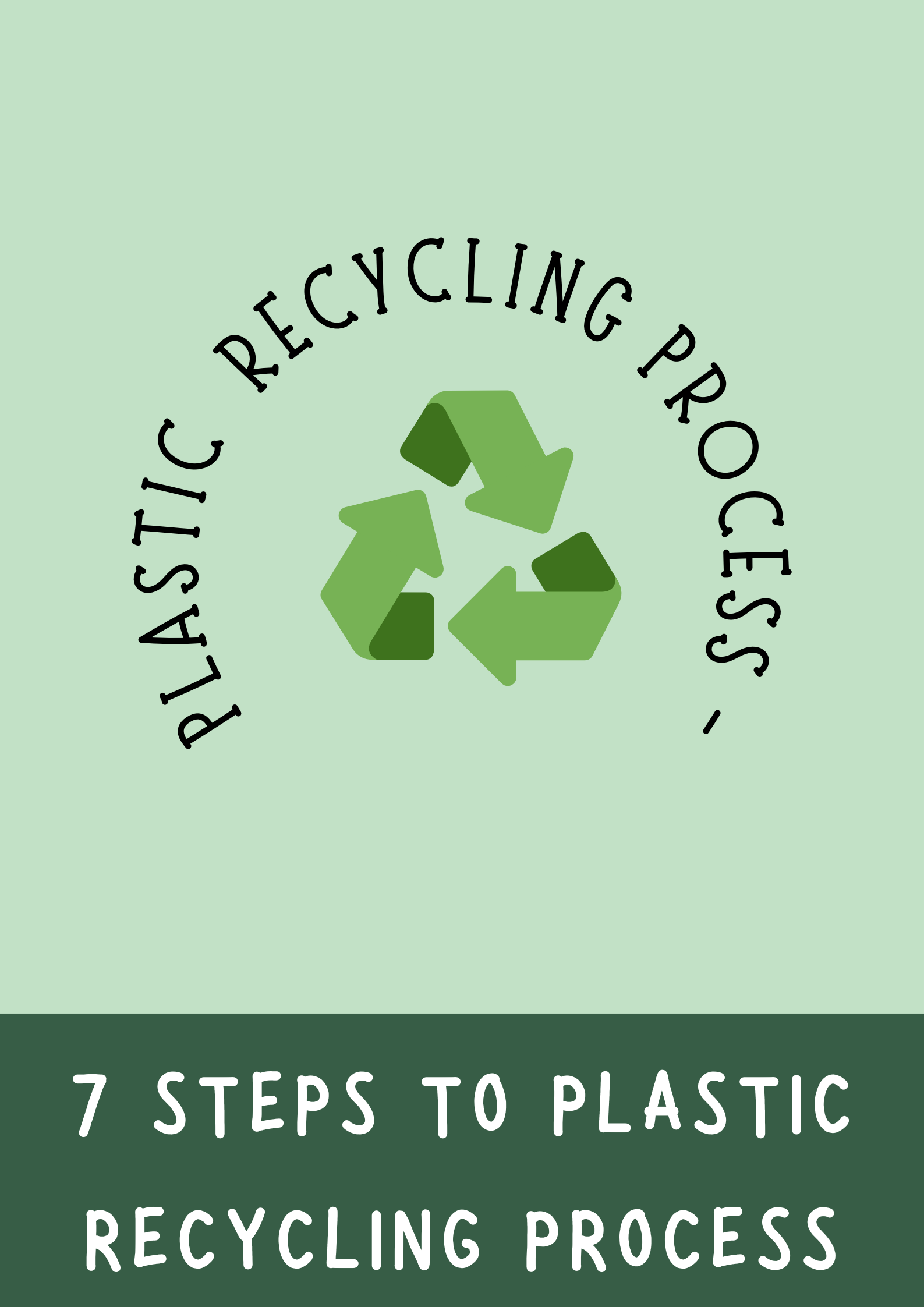In simple terms, plastic recycling is the process of recovering scrap or waste plastic and reprocessing the material into useful products.
Since the vast majority of plastic is non-biodegradable, recycling is a part of global efforts to reduce plastic in the waste stream, especially the approximately 8 million metric tonnes of waste plastic that enters the Earth’s ocean every year.
There are seven main stages in the plastic recycling process. Let’s understand each of them in detail:
- Collection — The first step in the recycling process is to collect the plastic waste. It can be done either through waste pickers who manually collect the waste or through automated machines that are placed in strategic locations. Once the waste is collected, it is sorted according to its type and color.
- Sorting — The sorted plastic waste is then sent to a recycling facility where it is further sorted into different types of plastic. The most common types of plastic are PET (polyethylene terephthalate), HDPE (high-density polyethylene), PVC (polyvinyl chloride), LDPE (low-density polyethylene), and PP (polypropylene).
- Shredding — The sorted plastic waste is then shredded into small pieces so that it can be easily processed. The shredding process also helps in removing impurities such as labels and caps. It typically includes the below steps:
- Step 1: The sorted plastic waste is fed into a shredder where it is chopped into small pieces.
- Step 2: The shredded plastic is then transferred to a washing tank where it is cleaned with water and chemicals.
- Step 3: The clean, shredded plastic is then dried in a centrifuge or heated in an oven.
- Melting — The dried and shredded plastic is then fed into a furnace where it is melted at high temperatures. The melting process helps in removing impurities such as dirt and dust. The melting process includes the below steps:
- Step 1: The dried, shredded plastic is fed into a furnace where it is melted at high temperatures.
- Step 2: The molten plastic is then passed through a filter to remove impurities.
- Step 3: The filtered, molten plastic is then transferred to a mold where it is cooled and solidified into pellets.
- Pelletizing — The pellets are then cooled and stored in bags or containers. They can be used to make new plastic products or sent to other facilities for further processing. These pellets are ideally of uniform size and shape so that they can be easily fed into the molding machines. They can be of different colors depending on the type of plastic they are made from.
- Compounding — The pellets are then fed into a compounding machine where they are mixed with other materials to create a new plastic compound. The most common additives used in this process are colorants, stabilizers, UV inhibitors, and flame retardants. When these additives are mixed in the right proportion, they help in creating a new plastic compound with improved properties.
- Molding — The new plastic compound is then fed into a molding machine where it is shaped into the desired product. The molded product is then cooled and ejected from the machine. It is then sent for packaging and shipping. The mold could be of any shape depending on the product being manufactured.
The above steps are followed in most of the plastic recycling facilities. However, there can be slight variations in the process depending on the type and quality of plastic being recycled.
Some plastics such as PET and HDPE can be recycled back into their original form while others such as PVC and LDPE need to be downcycled into lower-quality plastic.
The recycling process also generates a lot of plastic waste in the form of pellets, flakes, and powder. This waste is known as the plastic waste stream and needs to be properly disposed of to avoid environmental pollution.

